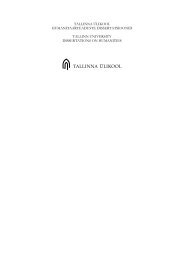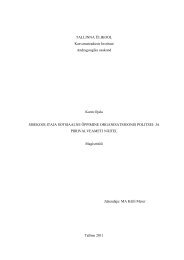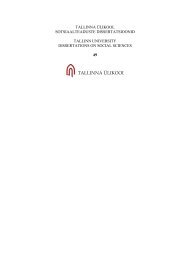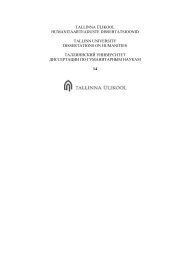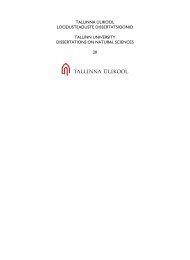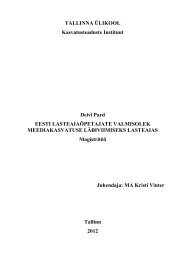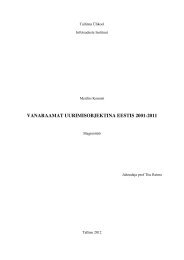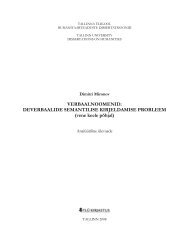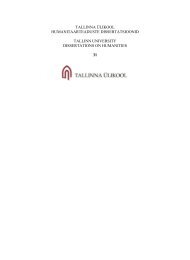Create successful ePaper yourself
Turn your PDF publications into a flip-book with our unique Google optimized e-Paper software.
as individualisms of Johannes Aavik, including new stems ainama, defetism, luuvik,<br />
pärdama, välitama and derivative defeatist.<br />
The work of Johannes Aavik has been researched a lot, foremost his contribution to the<br />
language innovation and actions in Estonia. There has been no extensive study on the efforts<br />
of Johannes Aavik living in Sweden. Furthermore there is a lack of information how the topic<br />
of language reform can be disserted in elementary school.<br />
There are demonstrated the topics of Estonian language and literature from the national<br />
curriculum which allow to dissert Johannes Aavik`s lifework.<br />
Estonian language and literature are universal subjects because language learning can be<br />
integrated with almost any topic which is connected to competences presented in the national<br />
curriculum (2010). The integration of Estonian as the mother tongue and Estonian literature<br />
would give higher results and a possibility to save time. Combining two (or more) subjects<br />
has not been widely practiced before as only few similarities in teaching and explaining has<br />
been recognized. Gaining perception about language variety, for example that it changes<br />
through the time and in situation, is important for students to develop as effective speakers<br />
and writers.<br />
The presentation is based on the keywords excitement, everyday life, variety, vertical and<br />
horizontal integration. It is proceeded from the knowledge, that theory and practice should be<br />
in balance. The worksheets “Ojake” and “Kadunud mõrsja” are based on the Bloom`s<br />
Taxonomy.<br />
The presentation and worksheets demonstrating the work of Johannes Aavik in the field of<br />
language and literature, experimented in Kallavere Secondary School in form 7, are the<br />
examples how different topics can be integrated. This material gives students a chance to<br />
practice the usage of “Eesti õigekeelsussõnaraamat”, understand the terms language and<br />
language reform, read the texts written in the innovative Estonian at the first half of 20 th<br />
century. Students can test they ability to create new words and discuss the necessity of the<br />
word competitions.<br />
97



